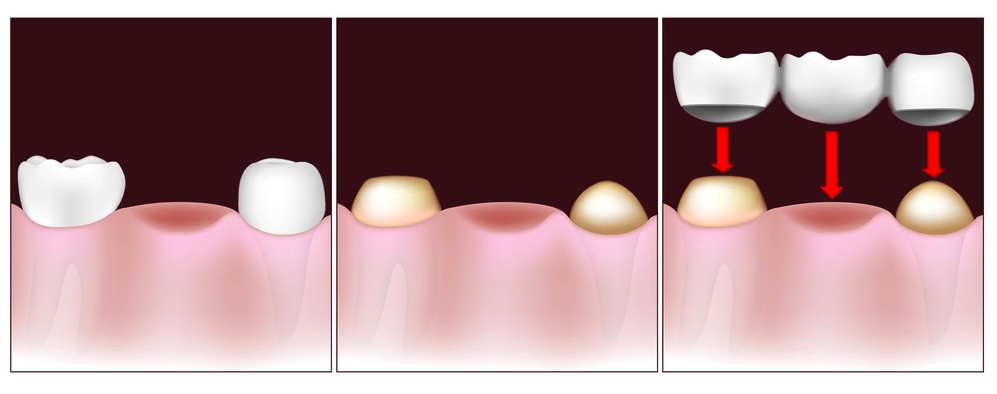Dental Crowns
Damaged, decayed, or misshapen teeth can find new beauty and life with a dental crown. This is why we recommend placing all-porcelain crowns on teeth that show when a person smiles. Back teeth may require a more durable restoration because of the intense pressure incurred during chewing such as porcelain-fused-to-metal. When a filling, onlay, or inlay isn’t sufficient to correct tooth decay, a crown is warranted. Dental crowns fit over a prepared natural tooth. Often, decay develops beneath old fillings, and only a crown can restore function and strength. A deep crack or fracture may also call for a crown.
Dental Bridges
A bridge has its name for a reason – it bridges the gap between the missing teeth. We must look at the surrounding as well as at the location of missing teeth, to determine where we will anchor the bridge. The anchoring teeth are referred to as abutment teeth, while the replacement teeth are called pontics. In most cases bridges can be anchored to dental implants. Bridges are fixed, or non-removable, prosthetics.
Dental Crown and Dental Bridge Pros & Cons
Advantages of Dental Crowns and Bridges abroad
- Look and behave like natural teeth.
- Good middle range solution to missing teeth.
- We offer 4 different solutions of varying costs and appearances.
Dissadvantages of Dental Crowns and Bridges abroad
- After several years natural teeth change in appearance and crowns might stand out.
- Supporting teeth may require root canal therapy.
- Neighboring teeth might not be strong enough to support a dental bridge in which case implants might be required.






